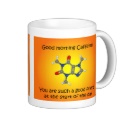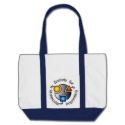|
|
Reference type: Journal
Authors: Oral E, Peppas NA
Article Title: Hydrophilic molecularly imprinted poly(hydroxyethyl-methacrylate) polymers.
Publication date: 2006
Journal: Journal of Biomedical Materials Research Part A
Volume: 78A
Issue: (1)
Page numbers: 205-210.
DOI: 10.1002/jbm.a.30725
Alternative URL: http://www.che.utexas.edu/research/biomat/PDFReprints/JBiomedMatRes_205-210(2006).pdf
Abstract: Highly cross-linked 2-hydroxyethyl methacrylate (HEMA) and poly(ethylene glycol) dimethacrylate with poly(ethylene glycol) of molecular weight 600 (PEG600DMA) were molecularly imprinted with hydrophilic templates glucose and proxyphylline using water as a solvent. Glucose-imprinted polymers showed increased recognitive capacity compared to nonimprinted polymers as well as increased glucose uptake compared to structurally similar galactose and methylglucopyranoside. Increasing glucose concentration in the imprinting mixture resulted in higher capacity and selective binding. Similar results were obtained for proxyphylline-imprinted P(HEMA-co-PEG600DMA) polymers, where the proxyphylline uptake was higher than structurally similar theophylline. Glucose-imprinted networks also showed diffusion coefficients on the order of 10-6 cm2/s, conducive to applications in drug delivery and tissue engineering. This work showed that using pairs of hydrogen-bonding monomers and templates, selective, high-affinity sites could be created despite nonspecific binding. © 2006 Wiley Periodicals, Inc. J Biomed Mater Res, 2006
Template and target information: Review - MIPs from poly(HEMA)
Author keywords: polymer materials, polymer science and technology, polymer synthesis
|


 Good morning caffeine mug
Good morning caffeine mug







 SMI logo impulse tote bag
SMI logo impulse tote bag







 SMI mug grey
SMI mug grey






